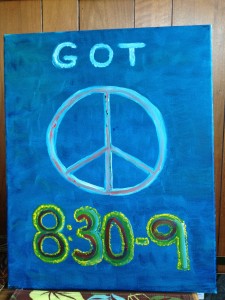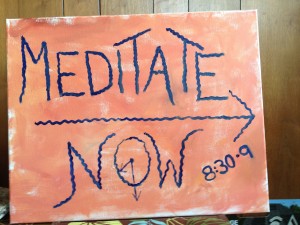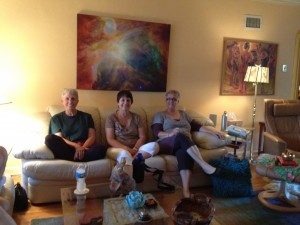How Do You Know?
 I’ve been listening to U Tejaniya answer questions from students on retreat at IMS (available on Dharma Seed here) and reading his most recent book, “Dhamma Everywhere” (available as a free pdf here), and I’m very intrigued by his teachings…which are light, relaxed and very naturalistic.
I’ve been listening to U Tejaniya answer questions from students on retreat at IMS (available on Dharma Seed here) and reading his most recent book, “Dhamma Everywhere” (available as a free pdf here), and I’m very intrigued by his teachings…which are light, relaxed and very naturalistic.
He says, “…Do you know that you have a mind? How do you know that you have a mind? You can see or observe the mind through its workings/functions, e.g. knowing, thinking, experiencing, feeling, wanting, focusing, etc.
“Now, put your hands together and look at your clasped hands. You know that your hands are touching, right? How do you know this touching sensation? What is the mind doing that you are able to know this? You know because the mind is aware and paying attention to it right now.
“Do you know that the mind is paying attention and aware? Would you know that your hands were touching if your mind was thinking about something else?
“No.
“So you can see that it is not merely because your hands are touching that you know but because the mind is paying attention and awareness is a quality that is part of this attention that you know they are touching.
“Can you shift your attention from your palms to your feet? You can, right? This shift in attention is actually the mind at work. It is the mind paying attention.
“If you know that you are paying attention, then you are aware of the mind.”
Maybe it’s just where I am in my practice right now, but I find not only what he says — but how he says it — to be very, very helpful.
That Changes Things
 The Monday night Dancing with Life KM group meets again tonight. The group is reading the book, Dancing with Life, by Phillip Moffitt and the “assignment” for tonight is to read to the end of Chapter 5 and to come prepared with at least one sentence, phrase or paragraph to discuss with the group.
The Monday night Dancing with Life KM group meets again tonight. The group is reading the book, Dancing with Life, by Phillip Moffitt and the “assignment” for tonight is to read to the end of Chapter 5 and to come prepared with at least one sentence, phrase or paragraph to discuss with the group.
I chose a few from an early part of the book, where Phillip gives very clear instructions for the mindfulness meditation practice, AND very clear descriptions of the benefits.
From page 13: “Starting over is a key step in meditation.” This is big for me because it’s so reassuring. It’s not a failure to have to keep starting over. It’s a key part of the process!
From page 20: For the first few years of practice you are literally reprogramming your nervous system to free it from habitual reactivity. This alone will bring much ease and flexibility to your mind.” I chose this sentence because he’s talking about a benefit of meditation that’s practical, tangle, not “woo-woo.” It’s a real, down-to-earth benefit that I have experienced.
And, he continues, “The most life-changing benefits of mindfulness meditation are the insights, which arise spontaneously the way a ripened apple falls from the tree of its own accord. Insight is what changes your life. Through insight you realize what brings well-being to yourself and others as well as what brings stress, discomfort, and dissatisfaction into your life.” I chose this passage because of the phrase: Insight is what changes your life.
I chose it because Insight has changed mine.
(image by Mose Tolliver, from “Outsider Art” postcards)
Just W. A. I. T.
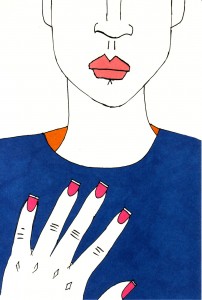 I opened the July e-newsletter from Spirit Rock and was delighted to read an interview with Shahara Godfrey, who is a fellow student in the Dedicated Practitioner Program. The topic of the interview is Wise Speech and I love her answer to the question:
I opened the July e-newsletter from Spirit Rock and was delighted to read an interview with Shahara Godfrey, who is a fellow student in the Dedicated Practitioner Program. The topic of the interview is Wise Speech and I love her answer to the question:
“How do you practice Wise Speech?”
Shahara says, “Sylvia Boorstein has this phrase, an acronym, WAIT, for “Why Am I Talking?” I always find it helpful because it is an example of taking the time to decide if I really need to talk right now.”
She continues, “I know because I have a tendency to talk a lot. I will ask myself, ‘Why am I talking or why do I need to say this?’ It really helps me pause and recognize there are other people who may need to speak who have not had the opportunity. I can step back and just WAIT. And it really feels good that I have taken a moment to reflect. And other times upon reflection, I still need to speak, but I have taken the time to figure it out.”
Thanks, Shahara…and Sylvia. I’m going to try it!
(image from “I Told You So,” by Daisy de Villeneuve)
Surprise!
 I’ve signed up to receive “e-Teaching” from Phillip Moffitt, which appear in my in-box every so often and are always inspiring. The one I got Friday relates to his latest book, Emotional Chaos to Clarity. The teaching was on “Clarifying Values, Intentions, and Goals” and it included a link to his Core Values and Essential Intentions Worksheet that was very….enlightening.
I’ve signed up to receive “e-Teaching” from Phillip Moffitt, which appear in my in-box every so often and are always inspiring. The one I got Friday relates to his latest book, Emotional Chaos to Clarity. The teaching was on “Clarifying Values, Intentions, and Goals” and it included a link to his Core Values and Essential Intentions Worksheet that was very….enlightening.
The worksheet lists a variety of values (from “Achievement/Accomplishment” to “Wisdom”) and the first step is to rate how important each one is to you. The next step is to choose the five “Extremely Important” ones. These, Phillip says, are your core values.
I would have thought things like “honesty” and “kindness” would be at the top of my list. But it turns out “Creative Expression,” “Independence” and “Love of Learning” are even higher!
The next part of the exercise is to develop essential intentions for each of these core values. Phillip writes, “….if ‘inner authority’ is a core value for you, then one way you might articulate the essential intention is, ‘I intend to value myself and remember that I always have a choice.'”
So now, one of my essential intentions is: I intend to honor creativity in myself and others and to look for ways that creativity can be expressed.
Click here to download Phillips worksheet. Click here if you’d like to subscribe to his e-Teachings.
(image from “A Whole World,” by Katy Couprie and Antonin Louchard)
Now I See…
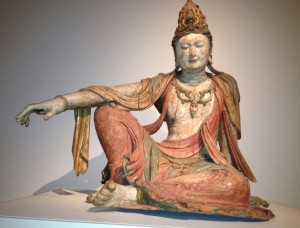 Last year I did a contemplative exercise developed by Jody Ziegler, for the Art History class she taught at Holy Cross College. She would send her students to the local art museum, asking them to choose one piece of art, which they would then look at — every week — for the entire semester (13 weeks). Their assignment was then to write a short paper, every week, after looking at that same piece of art. Each paper was to begin with the phrase: “Now I see…”
Last year I did a contemplative exercise developed by Jody Ziegler, for the Art History class she taught at Holy Cross College. She would send her students to the local art museum, asking them to choose one piece of art, which they would then look at — every week — for the entire semester (13 weeks). Their assignment was then to write a short paper, every week, after looking at that same piece of art. Each paper was to begin with the phrase: “Now I see…”
I fell in love with the idea after reading about it in a book she co-authored with Christopher Dustin, titled Practicing Mortality: Art, Philosophy and Contemplative Seeing.
So I tried it. I found a painting that caught my attention and spent at least half an hour, every week, for 13 weeks, looking at it and then writing about it in my journal, beginning with the phrase: “Now I see….” The paining was Woman (in Strong Light), by Emil Nolde. The experience was, to say the least, eye-opening.
So now I’ve decided to do it again. This time, I’ve decided to do it with the 11th century Guan Yin sculpture, pictured in the photo above. (Thank you, Scott.) My first visit to Guan Yin will be this Friday night.
Stay tuned.
What’s Hidden Within
One of the DPP homework assignments for this week’s sitting practice was:
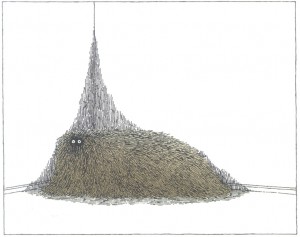 “Notice when thoughts arise connected to spending money or finances. What are the feelings associated with these thoughts? What is the response in the body? What happens when you imagine buying, then imagine not buying, that item? ”
“Notice when thoughts arise connected to spending money or finances. What are the feelings associated with these thoughts? What is the response in the body? What happens when you imagine buying, then imagine not buying, that item? ”
For me, “that item” was an Iced Latte Grande With One Raw Sugar.
The “buying” was kind of neutral. OK, there was some grasping. But when it came to “not buying”…..that’s when the beast-that-I-didn’t-want-to-see made itself known.
Rebellion was there. Defiance. Entitlement. Then Justification. Rationalization. Defensiveness. Then Anger…at the unfairness of it all. Humor, thankfully, kicked in. Then Relaxation. Followed by Sadness. A feeling of Unworthiness. Depravation. Abandonment made an appearance. Impoverishment. Not Having Enough. Not Feeling Safe. Being All Alone.
Wow.
All of that, disguised as a latte.
(image from “The Utter Zoo,” illustration by Edward Gorey)
Join. Peace. Now.
 Hey, check out these cool signs Cindy made for the Sitting in the Park! practice sessions held every Saturday morning near the Farmer’s Market in Tower Grove Park. We meet from 8:30 to 9:00 am — weather permitting — from now through October. Look for the Tibetan prayer flags…and these signs!
Hey, check out these cool signs Cindy made for the Sitting in the Park! practice sessions held every Saturday morning near the Farmer’s Market in Tower Grove Park. We meet from 8:30 to 9:00 am — weather permitting — from now through October. Look for the Tibetan prayer flags…and these signs!
There’s no dharma talk. Just sitting.
It’s very cool. (Even when it’s hot.)
Join us!
Dharma Seed Friends
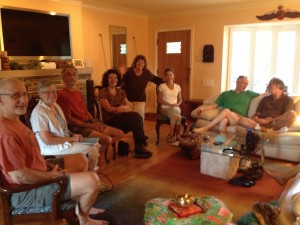 The new Dharma Seed KM group met last night for the first time, and as you can see, we’re off to a great start. We sat for 20 minutes (after all the photo-taking was done!), then listened to Tara Brach’s talk on “The Awakened Heart” and had a nice little discussion.
The new Dharma Seed KM group met last night for the first time, and as you can see, we’re off to a great start. We sat for 20 minutes (after all the photo-taking was done!), then listened to Tara Brach’s talk on “The Awakened Heart” and had a nice little discussion.
The group had originally planned to meet next at the end of July, but the response has been so positive that we don’t want to wait that long!
So, the next meeting will be on Monday, July 16, 7:00 to 9:00 pm.
The talk next time will be “Poetry & Beauty,” by Jack Kornfield. For more info, contact Jan. Hope to see you there!
What It Isn’t
A friend asked me over the weekend about resources for beginning meditators and without hesitation I recommended Mindfulness in Plain English, by Bhante Gunarantana. It’s been my go-to book for a clear, easy-to-understand overview — with instructions — on how and why we practice Mindfulness Meditation. And Metta, too, because the newest edition includes a section on “The Power of Loving Friendliness.”
I did a serious purge of books about a year ago, but I kept this one. So I took it off my shelf — with the intention of sharing it with my friend — and then I noticed how there was something highlighted on just about every page, and I started reading it again. It’s even better than I remember!
I especially love the chapter on “What Meditation Isn’t.” Here’s a list:
 Misconception 1: Meditation is just a relaxation technique.
Misconception 1: Meditation is just a relaxation technique.
Misconception 2: Meditation means going into a trance.
Misconception 3: Meditation is a mysterious practice that cannot be understood.
Misconception 4: The purpose of meditation is to become psychic.
Misconception 5: Meditation is dangerous, and a prudent person should avoid it.
Misconception 6: Meditation is for saints and sadhus, not for regular people.
Misconception 7: Meditation is running away from reality.
Misconception 8: Meditation is a great way to get high.
Misconception 9: Meditation is selfish.
Misconception 10: When you meditate, you sit around thinking lofty thoughts.
Misconception 11: A couple of weeks of meditation and all my problems will go away.
I can’t say this strongly enough: If you’re looking for a wonderfully clear and straightforward introduction on the technique of and the understanding behind mindfulness meditation, read this book!
(image: “Macavity: The Mystery Cat, from T.S. Eliot’s Old Possum’s Book of Practical Cats,” illustration by Edward Gorey)
What Would Have to Happen?
The theme for this month’s Dedicated Practitioner Program is Right Livelihood, Money and Renunciation. The homework assignment includes readings, reflections, daily life and sitting practices.
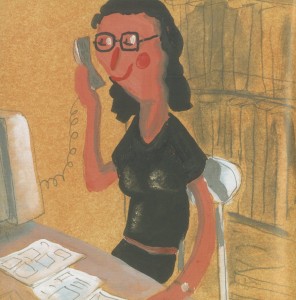 In one of the assignments, we are asked to: Reflect on your current livelihood, or how you spend the majority of your waking time. List at least three reasons for this choice, and whether or not it feels like it is a choice.
In one of the assignments, we are asked to: Reflect on your current livelihood, or how you spend the majority of your waking time. List at least three reasons for this choice, and whether or not it feels like it is a choice.
Hmmmm…
In another reflection, we are asked: What would your ideal work / life situation look like?
Hmmm…….!!!!
And most provocative of all: What would have to happen for you to be able to manifest your ideal work situation?
What, indeed.
(image from “A Whole World,” by Katy Couprie and Antonin Louchard)

